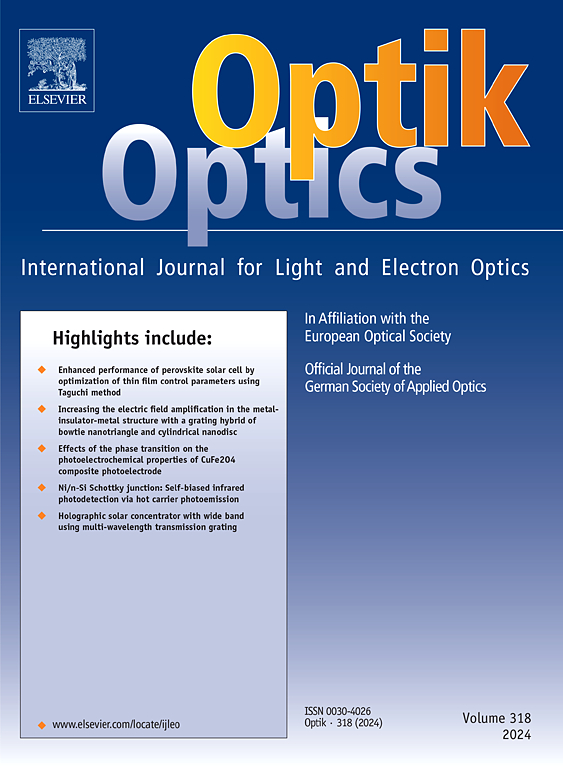Effects of the phase transition on the photoelectrochemical properties of CuFe2O4 composite photoelectrode
IF 3.1
3区 物理与天体物理
Q2 Engineering
引用次数: 0
Abstract
In this study, CuFe2O4 was grown using various Cu:Fe source molar ratios. The morphological, structural, electrical, and photoelectrochemical properties of CuFe2O4 photoelectrodes with different structural phases based on molar ratios were analyzed. XRD and XPS were performed to systematically analyze the relationship between the structural and photoelectrochemical properties of the photoelectrode. XRD analysis revealed the phase transformation of CuFe2O4 from cubic to tetragonal phase and back to cubic phase as the Cu:Fe source molar ratio was varied. The crystallinity of Cu-rich cubic-CuFe2O4 was found to be superior to that of tetragonal-CuFe2O4. XPS analysis showed that the Cu-rich cubic-CuFe2O4 sample has higher Cu and Fe binding energies and more oxygen vacancies than the tetragonal-CuFe2O4 sample, which helps reduce carrier recombination. Additionally, cubic-CuFe2O4 samples prepared in Cu-rich conditions demonstrated high flat-band potential and low charge transfer resistance values. As a result, the cubic-CuFe2O4 photoelectrode sample under the Cu-rich condition exhibited a relatively high photocurrent density value. The highest photocurrent density value (-0.38 mA/cm2 at −0.55 VSCE) was obtained with cubic-CuFe2O4 samples prepared under the Cu:Fe 3:1 condition.
相变对 CuFe2O4 复合光电电极光电化学特性的影响
本研究采用不同的 Cu:Fe 源摩尔比来生长 CuFe2O4。根据摩尔比分析了不同结构相的 CuFe2O4 光电极的形貌、结构、电学和光电化学特性。通过 XRD 和 XPS 系统分析了光电极的结构和光电化学特性之间的关系。XRD 分析表明,随着 Cu:Fe 源摩尔比的变化,CuFe2O4 发生了从立方相到四方相再回到立方相的相变。富铜立方氧化铜的结晶度优于四方氧化铜。XPS 分析表明,富铜立方-CuFe2O4 样品比四方-CuFe2O4 样品具有更高的铜和铁结合能以及更多的氧空位,这有助于减少载流子重组。此外,在富铜条件下制备的立方-CuFe2O4 样品具有较高的平带电位和较低的电荷转移电阻值。因此,富铜条件下的立方氧化铜铁氧体光电极样品表现出相对较高的光电流密度值。在 Cu:Fe 3:1 条件下制备的立方-CuFe2O4 样品获得了最高的光电流密度值(-0.55 VSCE 时为 -0.38 mA/cm2)。
本文章由计算机程序翻译,如有差异,请以英文原文为准。
求助全文
约1分钟内获得全文
求助全文
来源期刊

Optik
物理-光学
CiteScore
6.90
自引率
12.90%
发文量
1471
审稿时长
46 days
期刊介绍:
Optik publishes articles on all subjects related to light and electron optics and offers a survey on the state of research and technical development within the following fields:
Optics:
-Optics design, geometrical and beam optics, wave optics-
Optical and micro-optical components, diffractive optics, devices and systems-
Photoelectric and optoelectronic devices-
Optical properties of materials, nonlinear optics, wave propagation and transmission in homogeneous and inhomogeneous materials-
Information optics, image formation and processing, holographic techniques, microscopes and spectrometer techniques, and image analysis-
Optical testing and measuring techniques-
Optical communication and computing-
Physiological optics-
As well as other related topics.
 求助内容:
求助内容: 应助结果提醒方式:
应助结果提醒方式:


